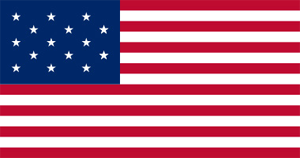War of 1812 Battles |
Colonial Wars |
American Wars |
Battle of Big Sandy Creek
May 29-30, 1814, Big Sandy Creek, Ellisburg, New York
 |
|||||||||||||||||||||
|
From Sackets Harbor, on April 21, Commodore Isaac Chauncey sent orders to Lt. Melancthon T. Woolsey directing him to choose 5 officers and 25 men to proceed in the USS Lady of the Lake to Oswego and then bring the shipbuilding supplies north to the shipyards.
On May 28, Woolsey decided he would attempt to reach Sackets Harbor with 19 bateaux. Maj. Daniel Appling and 130 regular riflemen were assigned to Woolsey as an escort, while 150 Onieda warriors were to meet them along the way. With only 8 miles left to travel, they pulled into Sandy Creek to await a further escort of marines and troops being sent from Sackets Harbor.
The morning of May 29, Capt. Richard Smith of the U.S. Marines left Sackets Harbor with 100 officers and men, followed later by Commandant Charles Ridgely and a party of sailors. Prior to this force being sent, Brig. Gen. Edmund Gaines had sent a troop of dragoons with a couple of artillery pieces west along the road to Sandy Creek.
They arrived at the mouth of the Big Salmon River, having mysteriously lost one of their boats. At 7:00 A.M., lookouts on a British ship sighted one of the American bateaux. The British decided to intercept the American flotilla and sent Com. Stephen Popham, in pursuit with 2 gunboats and 3 cutters. On his way, he was joined by Com. Francis B. Spilsbury. This increased Popham's strength to 3 gunboats and 4 smaller craft, plus nearly 200 sailors and marines.
This boat, discovered by the British forces, eliminated the secrecy of Wooley’s mission. The captured crew quickly betrayed the whole operation, they said that they had become separated from a much larger flotilla with a large escort. At Big Salmon, the American forces met up with 150 Oneidas warriors, whom Woolsey had dispatched the previous day. The Oneidas marched north along the shore as the boats proceeded in the Lake. At noon, they reached the mouth of the Big Sandy Creek. All the boats were sent as far inland as was possible.
Woolsey sent a lookout to scout for British ships. The lookout discovered that a gun-boat and 3 barges were headed for the location of the American forces. Woolsey set out a call for the neighboring militia and hastily prepared for the coming battle. The Americans had been warned the British were on their way and deployed the riflemen and the Onieda warriors on both sides of the creek about a half mile below the landing. The dragoons and artillery pieces arrived about 9:00 A.M. and were also deployed.
At 8:00 A.M., the British began to cannonade the American forces from the mouth of the Big Sandy Creek. The American forces hid along the shoreline of the Creek and waited for the British to advance inland. At about 10:00 A.M., the British forces had progressed up the Creek. About a half mile from the the American bateux, the American forces rose from their concealment and a brief 10-minute battle ensued. The British fought hard but the American and Indian musket fire was overwelming. Popham, who was now wounded, ordered the British to retreat.
The Americans continued a fierce attack, and they surrounded the British force and the gunboats.
With 50 men wounded and 17 men dead, the British commander surrendered and the fighting stopped. The Onieda Indians were not satisfied with the British surrender and were prepared to continue the killing. The American officers were able to save the surviving British troops from the Indians wrath, but it was a difficult task.
The British officers, realizing their mistake, quickly surrendered to avoid further casualties.
The British had suffered a stunning defeat, for a minor skirmish it had important results. Yeo was now short the boats captured, and 200 officers and men. Chauncey now had the guns he needed for the USS Superior, and other needed supplies. The British prisoners had their weapons taken from them and they were marched off to prison in New England. Seeing no further need to blockade Sackets Harbor, the British fleet returned to Kingston on June 6.
